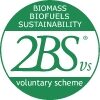About us
Renewable Energy Directive
The Renewable Energy Directive (RED) was first published by the European Commission in 2009.
It was subsequently revised in 2018 to make way for RED II.
The Renewable Energy Directive’s aim is to promote energy produced from renewable sources and thus facilitate the reduction of greenhouse gas (GHG) emission in European countries.
To this end, it establishes an ambitious regulatory framework for the transition to a low-carbon economy.

The RED II directive establishes sustainability criteria for biofuels, bioliquids and biomass fuels.
This regulation defines what constitutes an eligible sustainable raw material and a sustainable product. It is based on two pillars: land and raw materials sustainability and greenhouse gas emissions.
In terms of sustainability of land and raw materials, the directive requires that :
- Incoming raw materials must come from sustainable plots. They may not come from a land with high biodiversity potential or deforested land, for example.
- Waste and residues must respect the principles of the circular economy and meet the Directive’s definition of waste.
For the second axis, concerning Greenhouse Gases, the regulatory framework requires that :
- In order to reduce greenhouse gas emissions, the product marketed (biofuel or biogas) must be more virtuous than its fossil fuel counterpart.
Changing targets and requirements
To guarantee its greenhouse gas reduction objective, the RED directive revises its requirements over time.
The first version of the RED set a target of 20% renewable energy use by 2020.
In this second version, the rate is set at 32% by 2030.
Finally, the requirements of RED III, published in 2024 and coming into effect in May 2025, project a 42.5% rate of renewable energy use by 2030.
Implementation and certification
The directive is implemented through national or voluntary schemes, such as 2BS.
These schemes aim to facilitate the implementation of the directive’s objectives by providing an additional framework for certifying renewable energies and guaranteeing their environmental sustainability.

